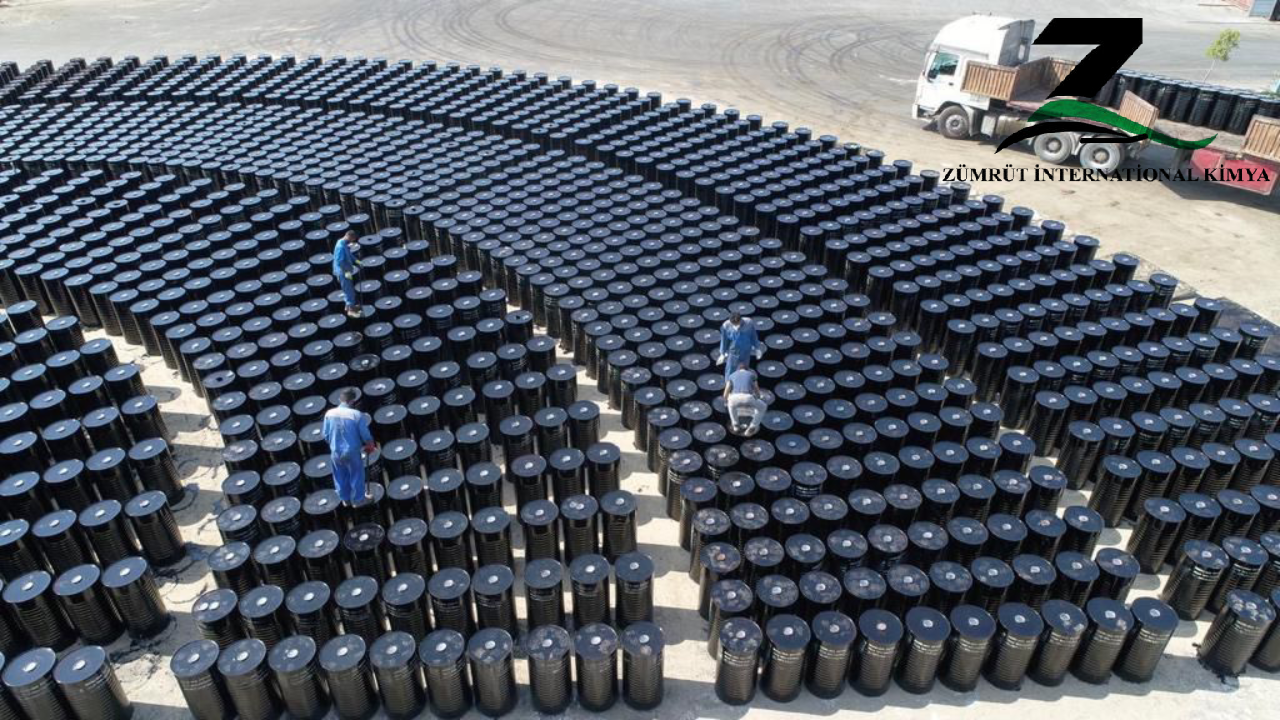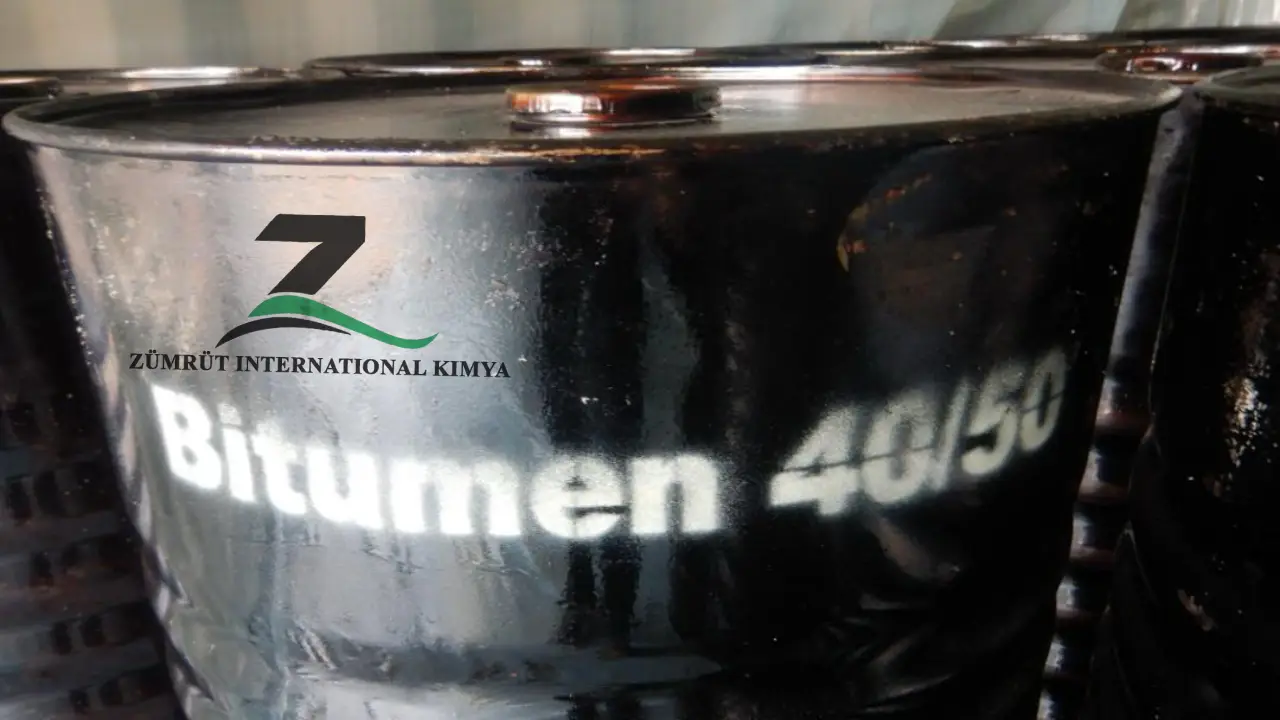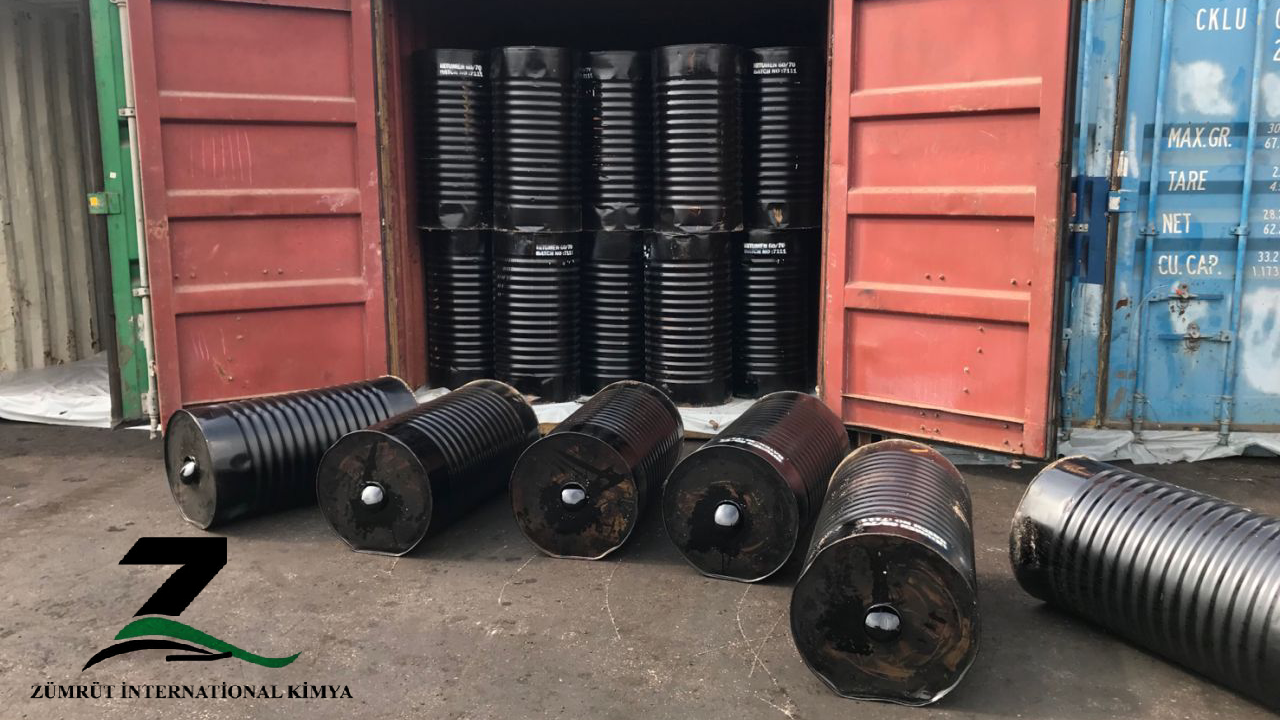
Bitumen Penetration grade 40/50 Description
Bitumen penetration grade 40/50 is a type of bitumen, commonly known as asphalt binder, that is classified based on its hardness and consistency. The penetration grade is determined by the depth (in tenths of a millimeter) to which a standard needle penetrates the bitumen sample under specific conditions of temperature, load, and time. Here is a detailed description of bitumen penetration grade 40/50:
Bitumen Penetration grade 40/50 Key Characteristics:
- Penetration Value :
– Range : The penetration value for this grade of bitumen ranges between 40 and 50 tenths of a millimeter.
– Significance : This indicates that the bitumen is relatively hard compared to softer grades (e.g., 60/70 or 80/100). The lower the penetration value, the harder the bitumen. - Softening Point :
– Typical Range : The softening point for penetration grade 40/50 bitumen typically falls between 48°C and 56°C.
– Significance : A higher softening point indicates better performance in hot weather, as the bitumen will not soften and flow as easily under high temperatures. - Viscosity :
– Description : Bitumen 40/50 has a relatively high viscosity, making it more resistant to deformation and flow.
– Significance : High viscosity is beneficial in areas with heavy traffic loads, as it provides better structural support. - Ductility :
– Description : Ductility measures the bitumen’s ability to stretch without breaking.
– Significance : Even though 40/50 grade bitumen is harder, it still retains adequate ductility to withstand thermal expansion and contraction without cracking.
Typical Applications:
- Highway Construction :
– Application : Used in the construction of highways and major roads where the pavement needs to endure heavy traffic loads and stress.
– Benefit : Provides durability and resistance to deformation under heavy loads. - Airport Runways :
– Application : Ideal for use in the construction and maintenance of airport runways and taxiways.
– Benefit : High resistance to the heavy loads of aircraft and high temperatures. - Industrial and Heavy-Duty Pavements :
– Application : Suitable for industrial areas, loading docks, and other heavy-duty pavements.
– Benefit : Can withstand significant weight and pressure from industrial equipment and vehicles. - Bridge Decks :
– Application : Used in the surfacing of bridge decks.
– Benefit : Provides good structural integrity and resistance to environmental stresses. - Rural and Urban Roads :
– Application : Can be used for rural and urban roads that experience moderate to heavy traffic.
– Benefit : Ensures long-lasting performance and reduced maintenance needs.
Advantages:
- Durability : The hardness and high viscosity of 40/50 grade bitumen make it highly durable and suitable for high-stress applications.
- Weather Resistance : Offers excellent resistance to temperature variations, making it suitable for both hot and cold climates.
- Load Bearing : Its high strength makes it ideal for areas with heavy traffic and load-bearing requirements.
- Reduced Deformation : Minimizes rutting and other deformations under high temperatures and heavy loads.
Bitumen Penetration grade 40/50 Applications
Bitumen 40/50 is suitable for road construction and for the asphalt pavements with superior properties. This type of bitumen used in the manufacture of hot mix asphalt for bases and wearing courses and the main usage of this product is used in the road at tropical regions. the bitumen is provided during the presses of oxidation of vacuum bottom in bitumen production units. Due to its high air blowing and penetration, it is used in tropical areas with the Warm weather. It is not softened at high temperature and does not fail its qualities.

Guaranty and safety of bitumen 40/50
Bitumen penetration grade 40/50 offers certain guarantees and safety features that make it a reliable choice for various high-stress applications. Here’s an overview of these aspects:
Guarantees:
- Consistent Quality :
– Standard Compliance : Bitumen 40/50 is manufactured in compliance with international standards (such as ASTM D946 or EN 12591), ensuring consistent quality and performance.
– Certification : Suppliers typically provide certification and test reports verifying that the bitumen meets the specified penetration grade and other properties. - Performance Reliability :
– Durability : It is known for its high durability, which guarantees long-lasting performance in demanding environments.
– Weather Resistance : The bitumen’s properties ensure it performs reliably across a wide range of temperatures, providing resistance to both thermal cracking in cold conditions and rutting in hot conditions. - Manufacturer Warranties :
– Product Warranty : Manufacturers often provide warranties on their bitumen products, covering aspects like performance and longevity under specified conditions.
Safety Features:
- Thermal Stability :
– High Softening Point : The high softening point of bitumen 40/50 means it remains stable and does not soften excessively under high temperatures, reducing the risk of deformation and maintaining road safety.
– Low Temperature Performance : Retains flexibility in lower temperatures, minimizing the risk of cracking and enhancing the safety of the pavement during cold weather. - Resistance to Deformation :
– Rutting Resistance : Its high viscosity and hardness ensure that the bitumen resists rutting, even under heavy traffic loads, maintaining a smooth and safe driving surface.
– Load Bearing Capacity : Suitable for areas with heavy and frequent traffic, ensuring that the pavement maintains its structural integrity and safety over time. - Adhesion and Cohesion :
– Strong Bonding : Ensures good adhesion between the bitumen and aggregates, preventing disintegration and potholes, which can pose safety hazards.
– Cohesive Strength : The internal cohesion of the bitumen prevents it from stripping away from the aggregate, ensuring a stable and safe pavement surface.
Best Practices for Safety and Performance:
- Proper Handling and Storage :
– Handling : Bitumen should be handled at recommended temperatures to avoid risks associated with overheating or cooling.
– Storage : Should be stored in insulated tanks to maintain its properties and prevent contamination. - Application Procedures :
– Quality Control : Ensuring proper mixing, laying, and compaction processes to achieve the desired pavement performance.
– Temperature Monitoring : Maintaining the correct application temperature during laying and compaction to ensure optimal bonding and performance. - Regular Maintenance and Inspection :
– Inspection : Regularly inspecting the pavement for signs of wear and tear, and conducting timely maintenance to address any issues before they compromise safety.
– Maintenance : Implementing maintenance strategies such as sealing cracks and applying surface treatments to extend the pavement’s lifespan and safety.

Bitumen 40/50 Packing
1 MT Jumbo Bag with a steel cage and pallet: Loading 20 MT in 20 ft Container
1 MT Jumbo Bag without cage and pallet: Loading 20 MT in 40 ft Container
1300 Kg Jumbo Bag: Loading 26 MT in 40 ft Container
180kg New Steel Drum: Loading 110 Drum in 20 ft
375Kg Bitubag: Loading 24 MT in 20 ft Container
Bulk in vessel: Loading 2000 to 20,000 MT in Bitumen Carrier
Bulk in Flexi Bag: Loading 20 MT in Bitumen Felexi Bag
Bulk in Tunker: Loading 25 MT in Truk Tanker
Bitumen Penetration grade 40/50 Specifications
| Bitumen 40/50 | Test method | Unit | Specification |
| Specific gravity @ 25°c | ASTM D70 | Kg/cm3 | 1.01/1.06 |
| Penetration @ 25°c | ASTM D5 | mm/10 | 40/50 |
| Softening point °c | ASTM D36 | °C | 52/60 |
| Ductility @25 °c | ASTM D113 | cm | 100 min |
| Loss on heating(wt) % | ASTM D6 | wt % | 0.2 max |
| Drop in penetration after heating % | ASTM D5-D6 | % | 20 max |
| Flash point °c | ASTM D92 | °C | 250 min |
| Solubility is CS2(wt) % | ASTM D4 | wt % | 99.5 min |
| Spot test | A.A.S.H.O.T102 | Negative |
Bitumen Penetration Grade 40-50 Specifications 1



